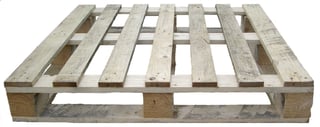 By now you should be pretty familiar with the basics of less than truckload freight classing in order to avoid LTL charges that are unnecessary (assuming you read the previous blog post), but it doesn’t end there. As with most things in life, classification isn’t cut and dry. Additional rules affect classing beyond the four basic factors mentioned in our first LTL freight class article – density, value/liability, packaging/stowability, and handling characteristics.
By now you should be pretty familiar with the basics of less than truckload freight classing in order to avoid LTL charges that are unnecessary (assuming you read the previous blog post), but it doesn’t end there. As with most things in life, classification isn’t cut and dry. Additional rules affect classing beyond the four basic factors mentioned in our first LTL freight class article – density, value/liability, packaging/stowability, and handling characteristics.
For instance, there are certain commodity characteristics that one must be aware of when shipping wooden products. “In the rough” refers to wooden articles that are not further manufactured other than sawed and planed. “In the white” refers to wooden articles that are further manufactured than those “in the rough” but with no more than one coat of primer. “Finished” refers to wooden articles that are beyond “in the white”. Less finished goods are classed lower than finished goods.
Next up are the terms SU (Set Up), KD (Knocked Down), and nested. “Set Up” items are those that are in their assembled condition for shipment. “Knocked Down” refers to items that have been taken apart to reduce the cubic footage displaced or to make a better shipping unit and are to be re-assembled after delivery. “Nested” articles are packed so that one item rests partially or entirely within another, thereby reducing the cubic-foot displacement. Items that take up less cubic footage will have a lower freight class.
The concept of “reasonably full packaging” also impacts class. “Reasonably full” means that the commodity occupies more than 65% of its container cube. If the container is less than 65% full, the class of the container or the commodity will be applied, but the applied class is whichever of the two is higher.
The risks of having non-compliant packaging are pretty severe. They range from:
- Outright refusal of the freight by the carrier
- Additional fees and charges that could be as much as 200% of the standard linehaul charges (yikes!)
- Or a total denial of any claims that may arise
Some common classification errors that we see which result in reclass fees include:
- Not having the NMFC# on Bills of Lading (Just having freight class doesn’t cut it)
- Invalid and vague item descriptions (such as “shipping item” or “FAK”)
- Using FAK class instead of the actual freight class
- Not reading all notes that apply to an item
- Finding any NMFC# to match a specific freight class
- Basing density on individual cartons when palletized
Below is a handy checklist to refer to when thinking about how your freight should be classed. These are questions that our LTL professionals utilize when trying to determine classifications and will be helpful to avoid extra freight charges due to improper freight classing. As always, you can also let us class LTL freight for you as well by filling out our short form. Happy LTL classing!

